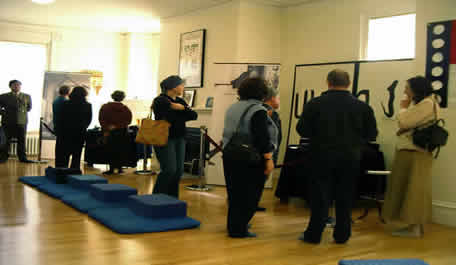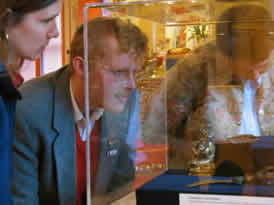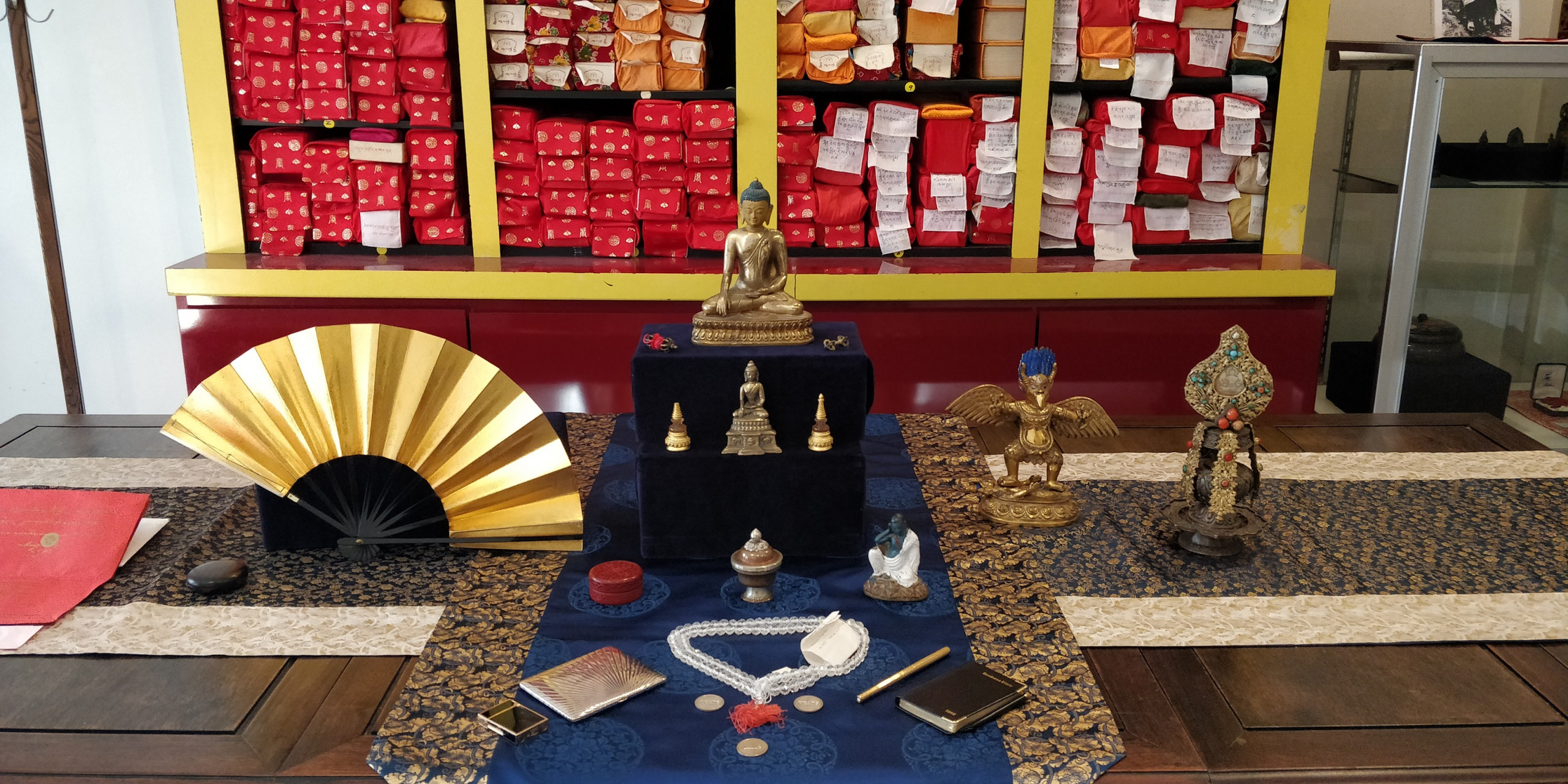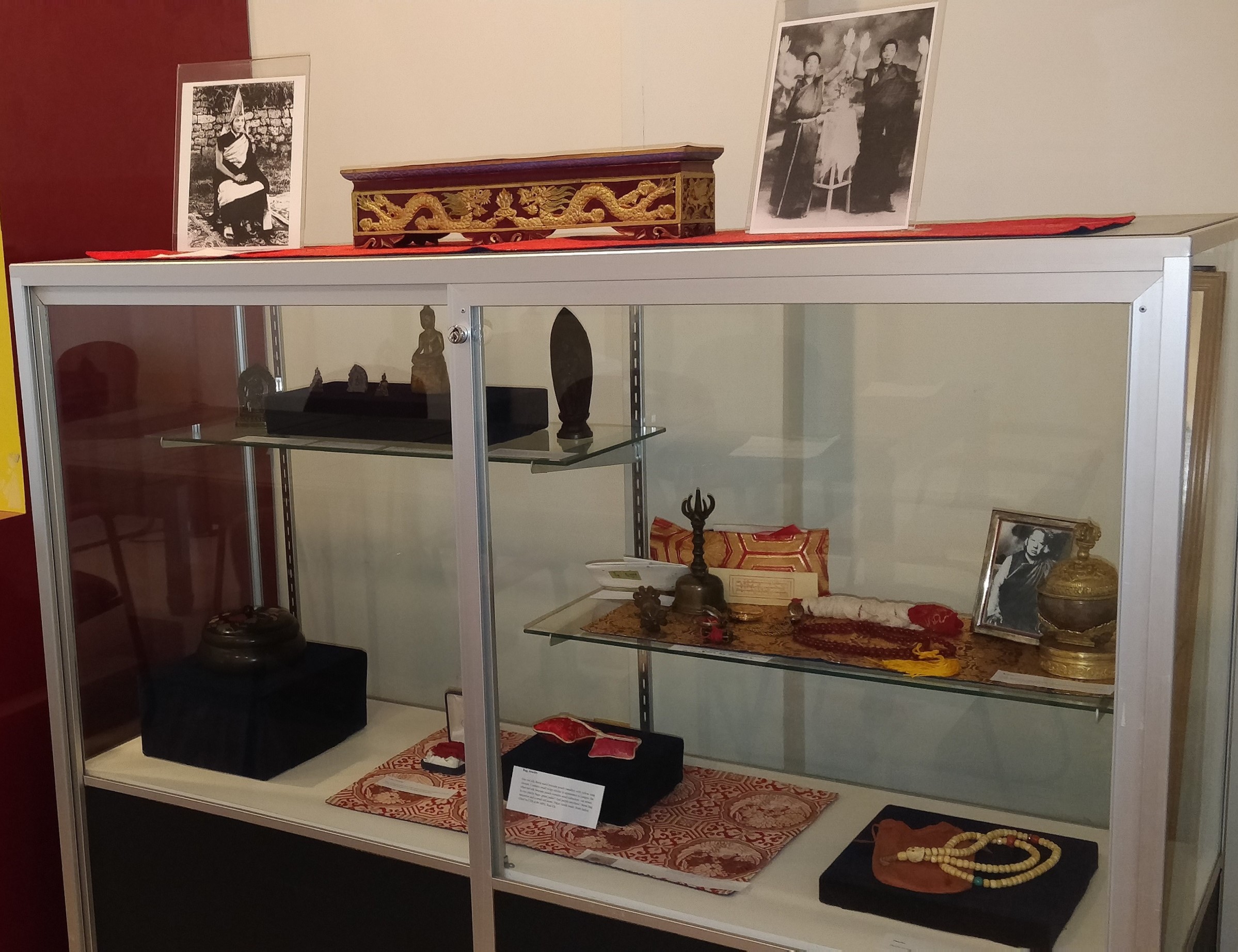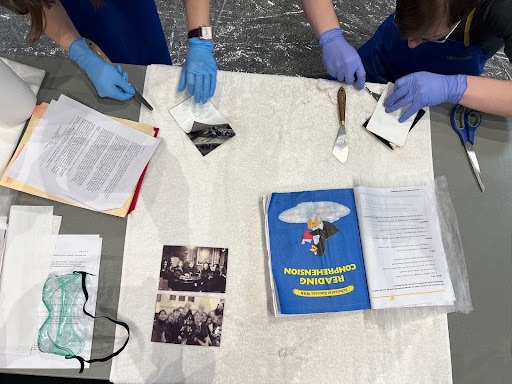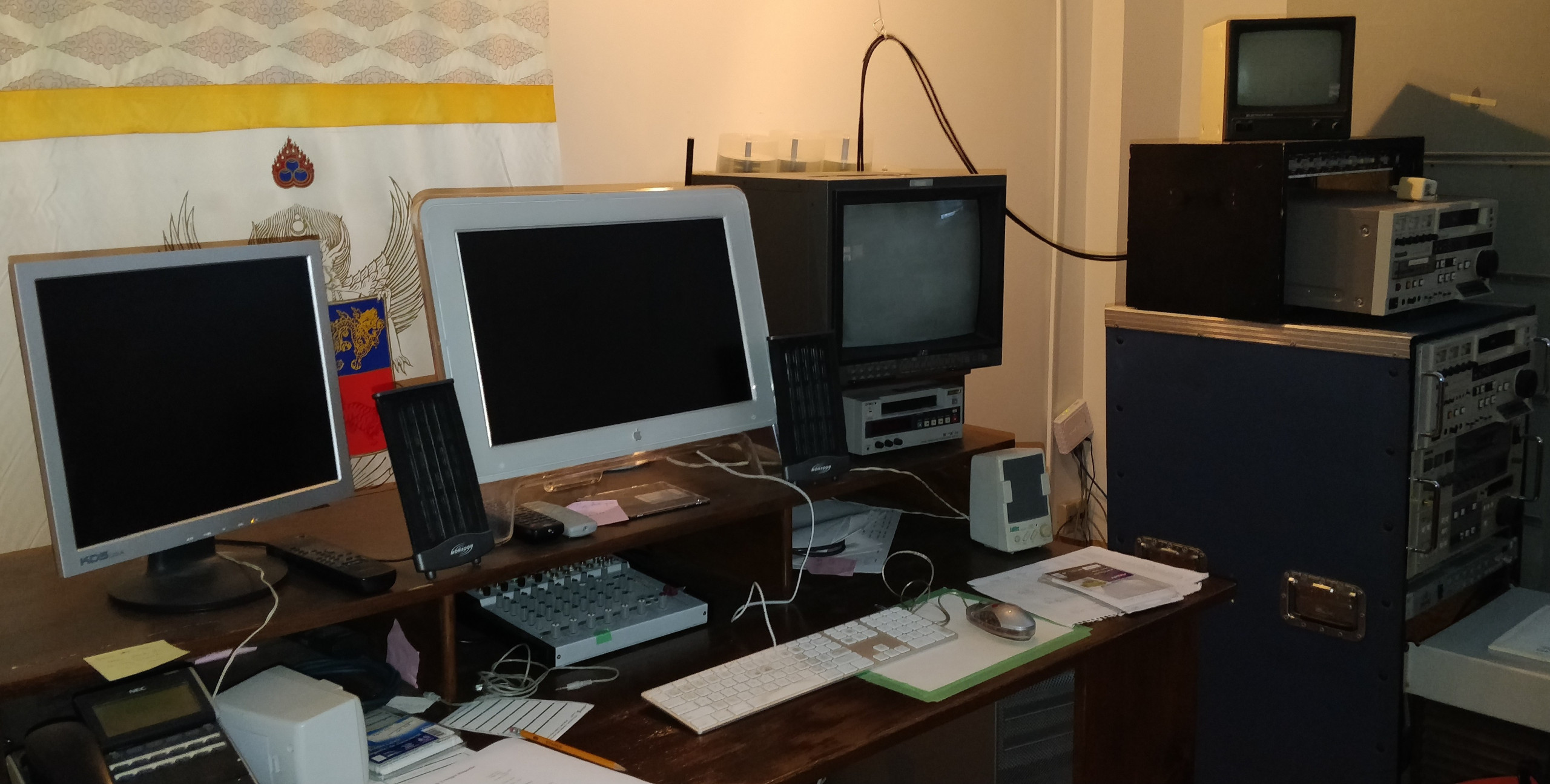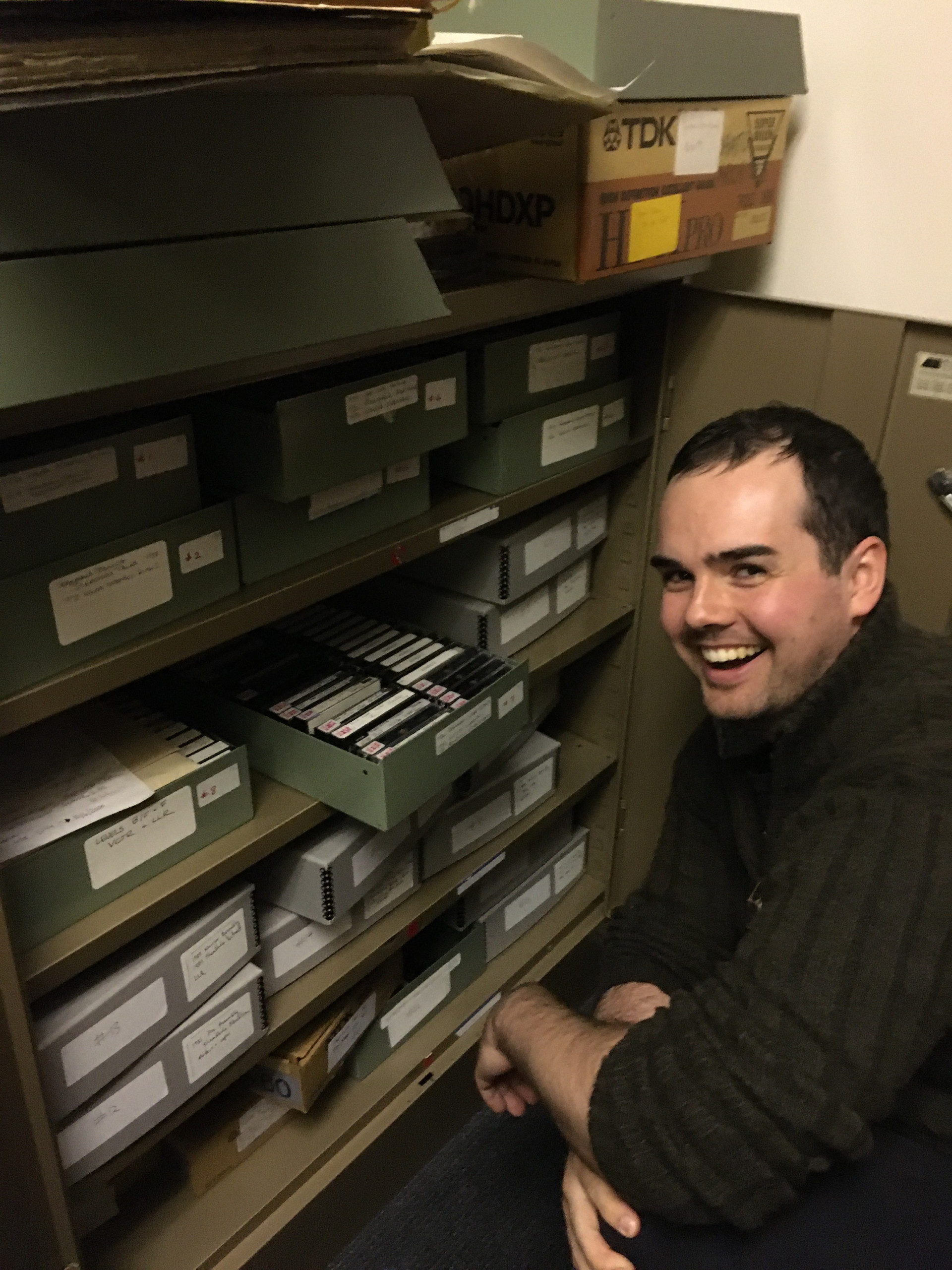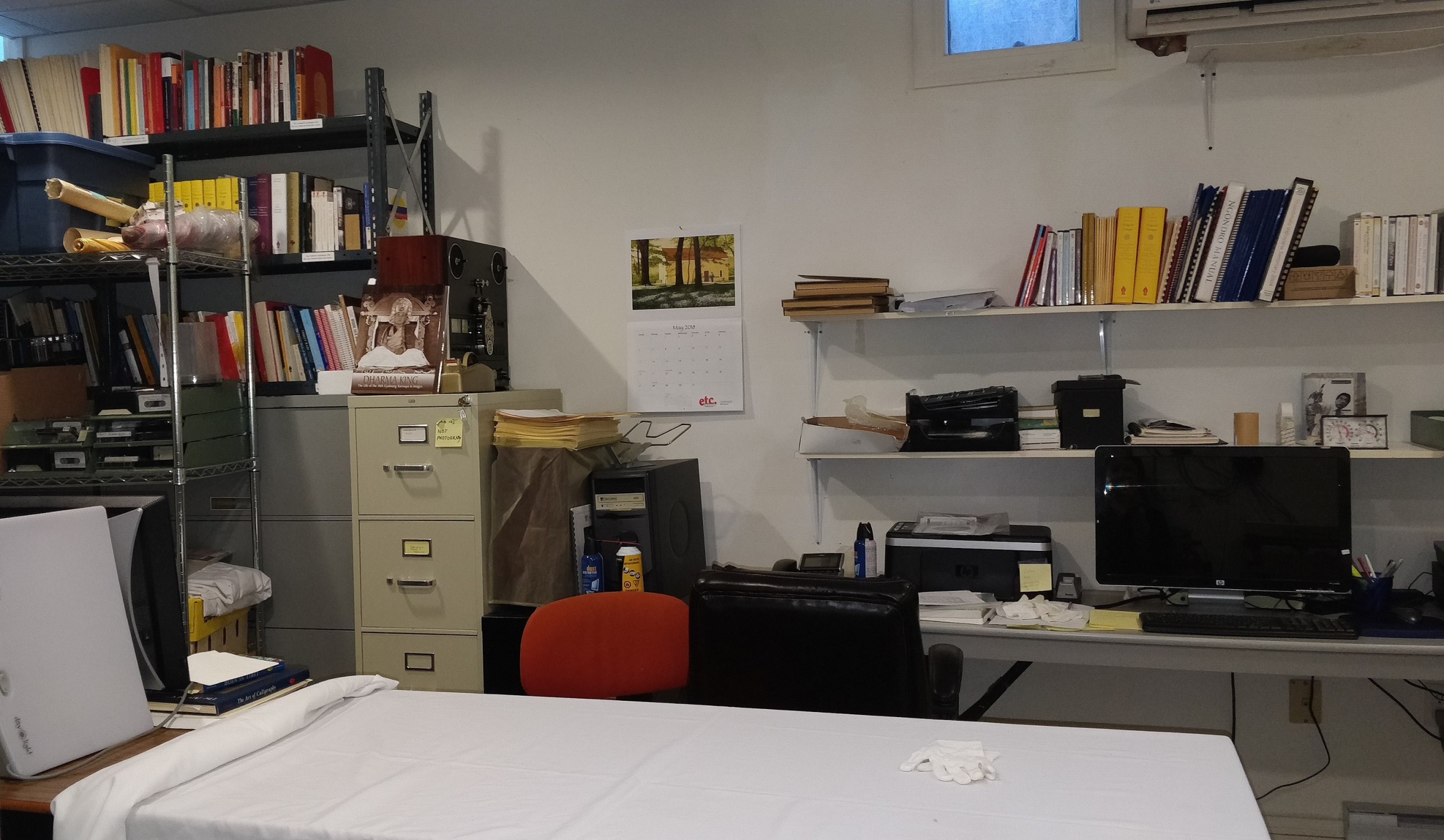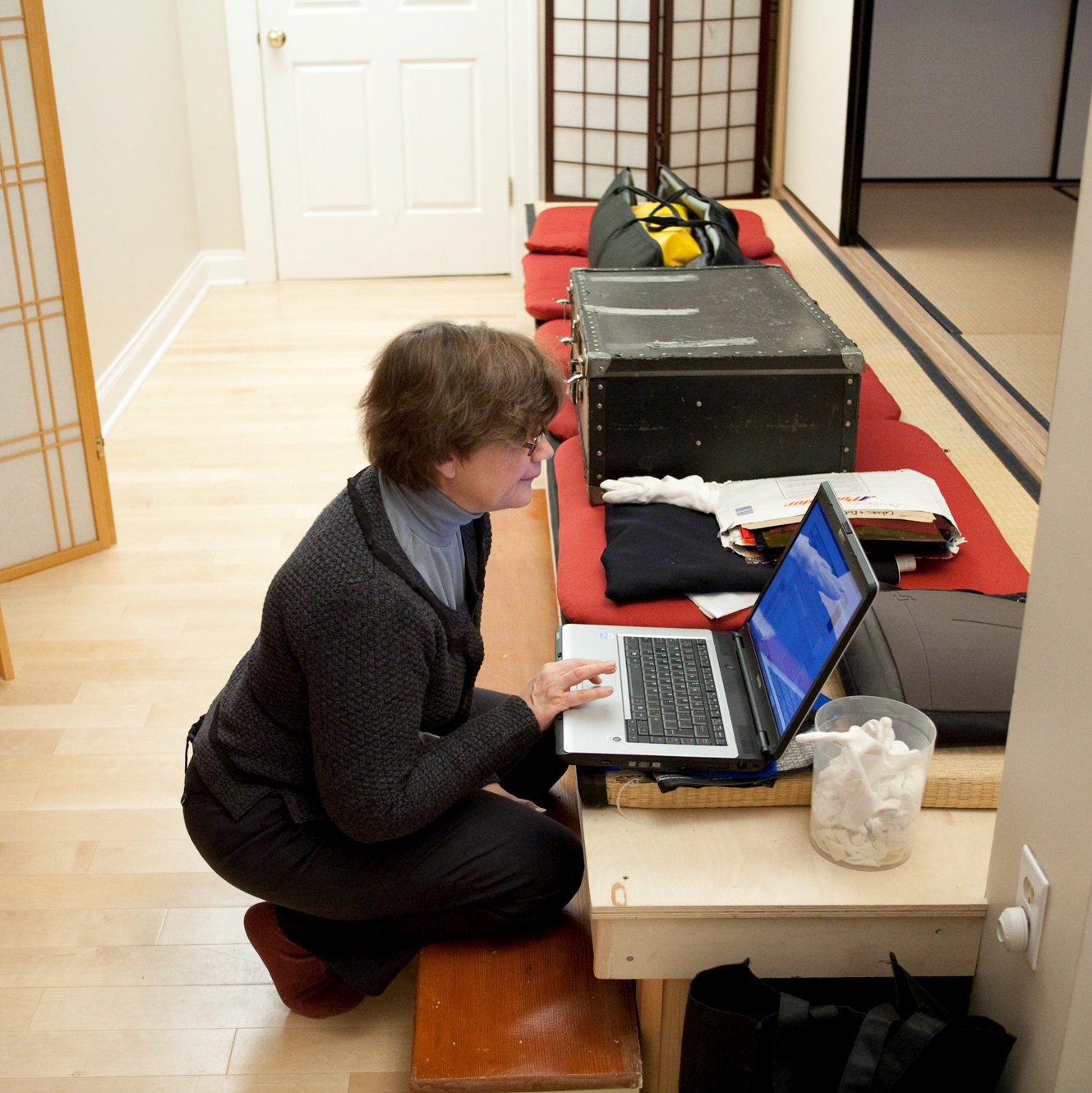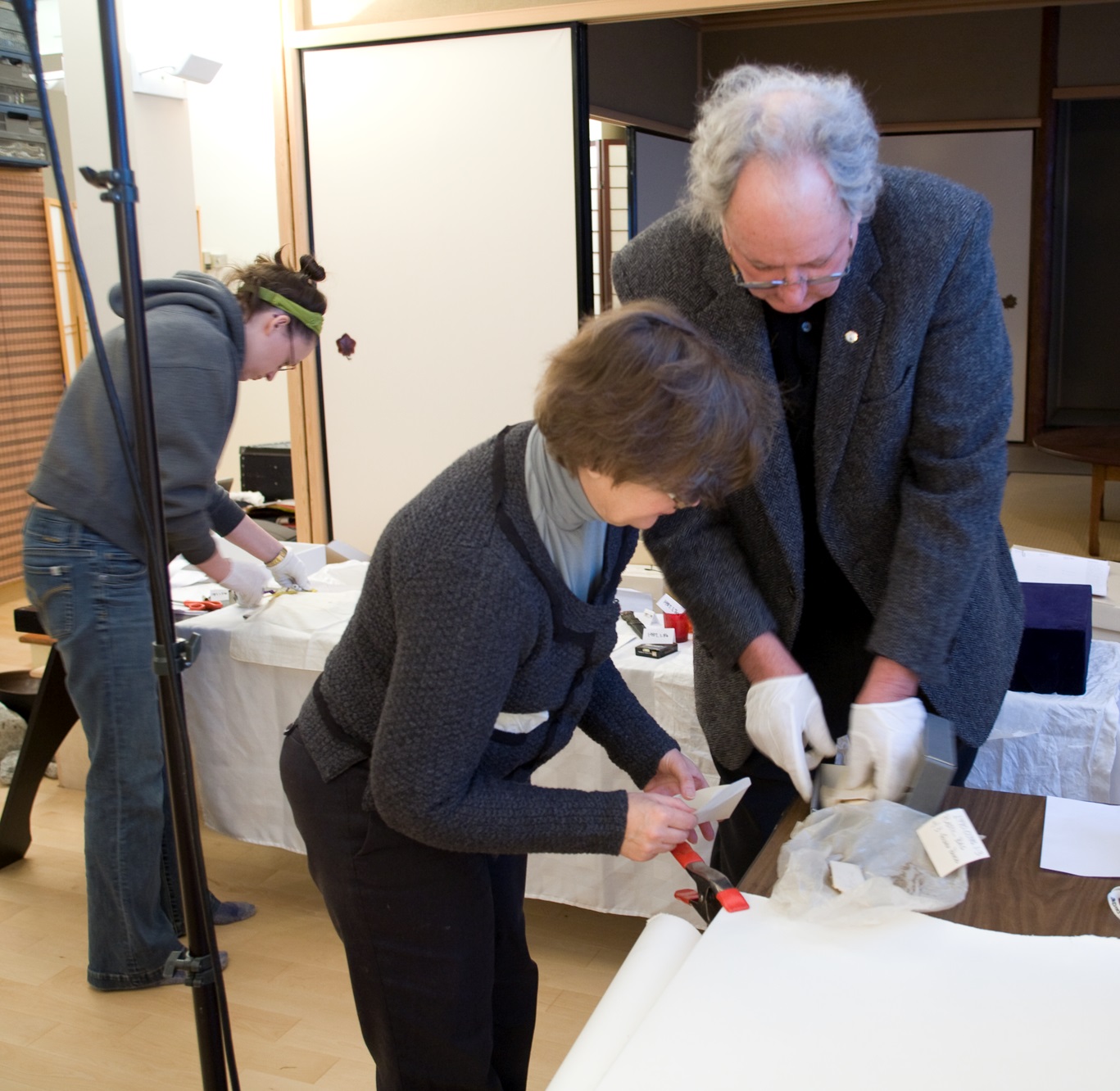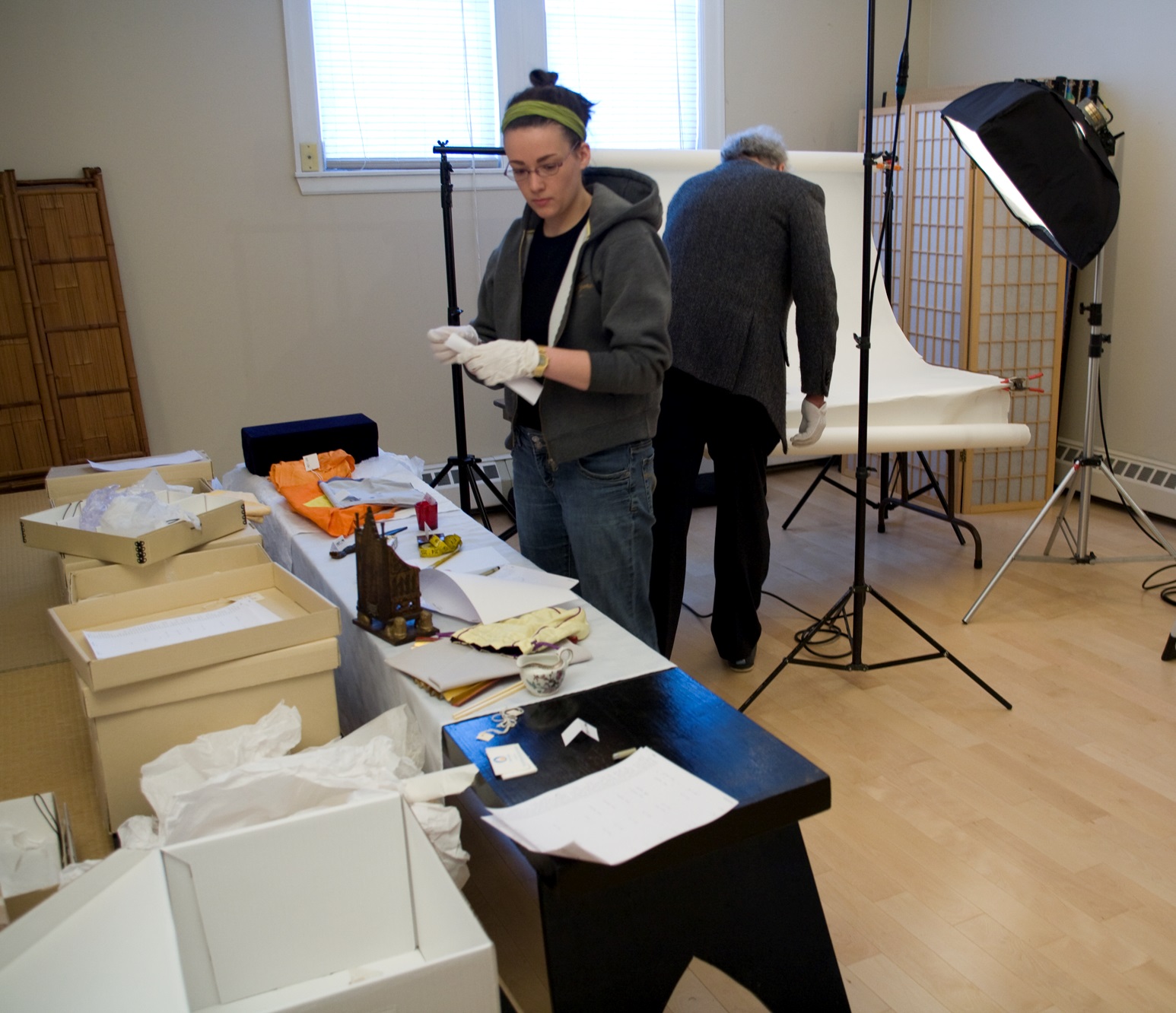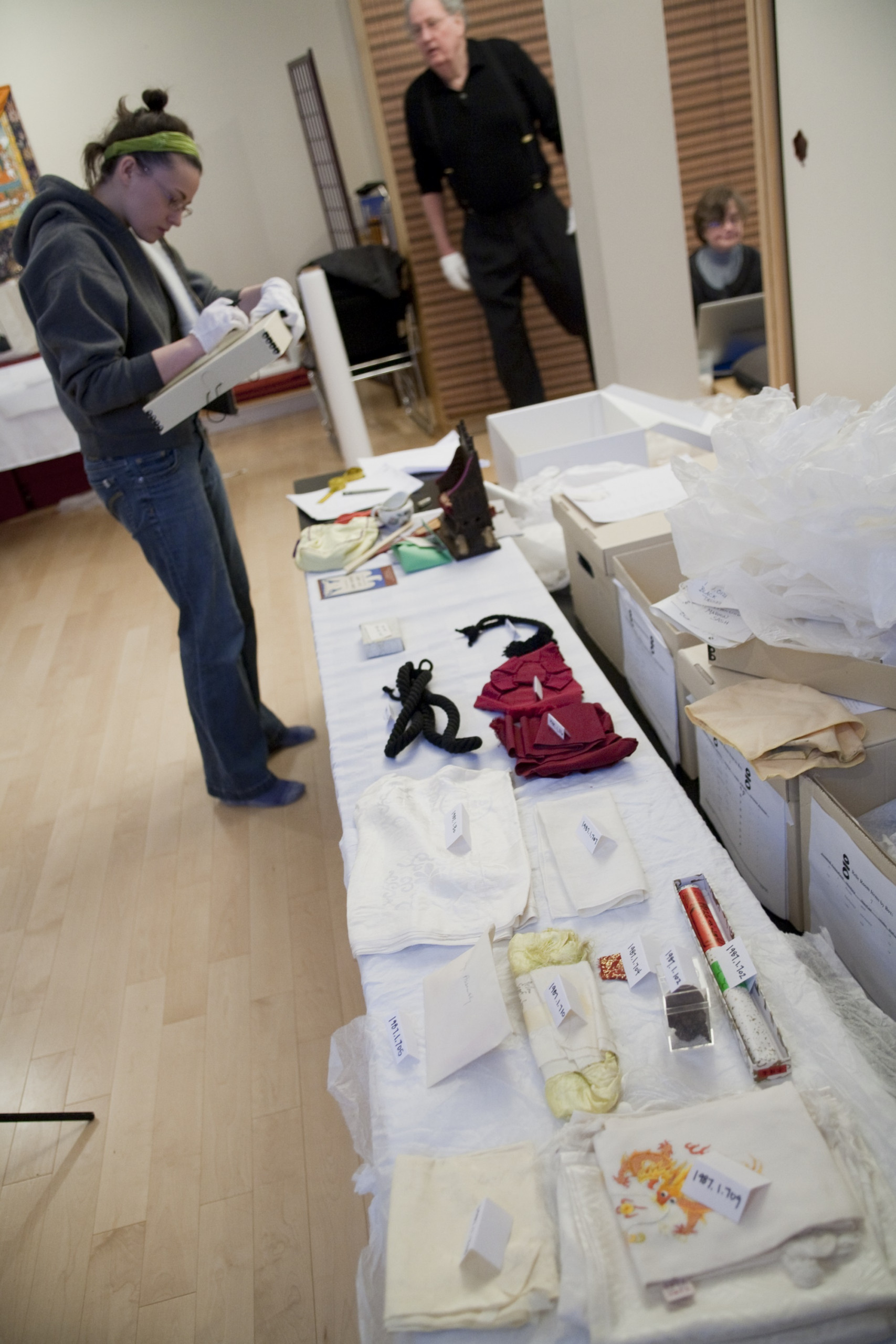Holdings of the Shambhala Archives
The holdings of the Shambhala Archives include a large selection of video, photographic, and audio materials, as well as documents, books, manuscripts, calligraphies, and other physical objects. This includes many teachings of Chögyam Trungpa, Rinpoche; as well as the teachings of many other Buddhist teachers, and oral histories of their students. To learn about the listing of audio, video, and photographs in the collection, by category (fonds), view the Archives Fonds page.
The holdings of the Shambhala Archives includes more than:
- 10,000 Audio Cassettes
- 3,500 Audio Reels
- 3,000 Video Cassettes
- 4,500 CD and other optical media
- 2,500 high resolution digital audio files
History
In 1970, upon his arrival in North America and commencing teaching in the summer, the Vidyadhara, Chögyam Trungpa Rinpoche specified that all his lectures be recorded on audio tape when he had started while teaching in England in the late 1960s. In the following few years he created the Department of Vajradhatu Recordings within the overall Vajradhatu organization, to ensure that the teachings by lineage holders within the Vajradhatu mandala were documented, recorded and preserved. As the Audio Fonds of the Shambhala Archives details, eventually over 2400 audio recordings were accumulated of his various teachings and presentations.
The Shambhala Archives is the storage and preservation facility for these teachings on audio media and transcripts, having been transferred from Vajradhatu Recordings. The teachings are catalogued into a database that acts as a resource in locating information on specific talks.
Making these materials available to students and dharma centers is a shared responsibility. Audio, video, and books in print and electronic form are published and available through Kalapa Media. Online classes and streaming delivery of video and audio is provided through Shambhala Online.
These teachings include:
- ~2,500 Talks by Chögyam Trungpa, Rinpoche
- ~1,900 Talks by Sakyong Jamgon Mipham, Rinpoche
- ~950 Talks by the Vajra Regent Osel Tendzin
- ~700 Talks by Khenpo Tsultrim Gyamtso, Rinpoche
- ~200 Talks by His Holiness Dilgo Khyentse Rinpoche
- ~100 Talks by HE T’ai Situ Rinpoche
- ~25 Talks by Karma Senge Rinpoche
- ~20 Talks by Changling Rinpoche
- ~50 Talk by His Eminence Tenga Rinpoche
- His Holiness the XVIth Gyalwa Karmapa
- His Holiness Dudjom Rinpoche
- His Holiness the Dalai Lama
- His Eminence Jamgon Kongtrul Rinpoche
- His Eminence Shamar Rinpoche
- Ven. Khandro Rinpoche
- Ven. Ponlop Rinpoche
- Suzuki Roshi
- Maezumi Roshi
- Pema Chödrön
- Allan Ginsberg
- Alan Watts
- The Nalanda Translation Group
To learn more:
The video recordings of Chögyam Trungpa are an incredibly precious resource. For many students, the ability to see him presenting the teachings is very powerful.
The Video Recovery Project – preservation Of the collection of 261 early B/W videos, with over 95% is now converted to professional digital video formats, was the initial focus of analog media preservation in the Archives. Although a relatively small collection of material, these video recordings are extremely important.
- All of the seminars given by Chögyam Trungpa Rinpoche in the first three years of Naropa University (1974 -1976), were recorded on black and white video, and the material in the early 1990s was in excellent condition.Between 1992 and 1995, over 200 of these video tapes were copied to more robust analog formats. Half of the converted videos have since been published on video cassette then DVDs with study guides for classes.
- Additionally, there are other early seminars given in Boulder, Colorado and at Karme‐Choling in Vermont, and a small number of talks at other locations, including two seminars in California. A detailed archival level description of this fonds is found at the link below. A number of these seminars have also been published.
The color video collection, which is about one third of the whole, includes two Shambhala Training public talks, a seminar on Visual Dharma from 1978, a Vajra Assembly conducted by Chögyam Trungpa Rinpoche, and a number of other ceremonies and teachings.
To learn more:
- View our online video offerings – Link
Our collection of photos contains extensive documentation of the activities of the founder of Shambhala, Chögyam Trungpa Rinpoche and his family.
This collection, received from 1969 to 1988, includes images from the visits and teachings of Tibetan Buddhist teachers such as His Holiness 16th Karmapa, His Holiness Dilgo Khyentse Rinpoche and His Holiness the Dalai Lama.
In addition there are images of the exhibitions of visual Dharma art including Ikebana and room installations by Trungpa Rinpoche, calligraphy, Japanese tea ceremony, drama, dance and music
All 20,000 photos have been digitized and entered into our database. Some, notably contact sheets and photos of buildings and land centres, need further digitizing to complete the documentation for this time period.
In addition, there are several thousand more photos that were not in the original collection, containing documentation of the teachings and activities of Sakyong Mipham Rinpoche, including his trips to Tibet, Kasung events, as well as the establishment of the land centres in Nova Scotia and Europe. These need to be digitised and catalogued.
Trungpa Rinpoche’s family and several photographers have donated large collections of material related to Trungpa Rinpoche’s life and teachings. We are grateful for all these donations and we welcome donations and/or bequests of personal and professional collections.
To learn more:
- Visit our photograph portfolio – Link
The VCTR Collection, or Ladrang, is a treasury of the belongings of the Vidyadhara Chögyam Trungpa Rinpoche, consisting of over 1,700 artifacts. It includes robes and religious relics that were hand-carried out of Tibet, as well as many objects—both secular and religious—that Trungpa Rinpoche purchased or received as gifts
It is traditional for students to maintain these belongings as sacred objects, viewing them as revealing the enlightened activity of the teacher. During his lifetime and for several years after Trungpa Rinpoche’s death, students who personally attended Rinpoche were the caretakers of these objects. In the mid 1990s responsibility for the Collection was transferred to the Shambhala Archives. They are maintained through donations of time and funds by students of Shambhala.
In his will, Trungpa Rinpoche stated:
“The monumental objects should be cherished and kept. The household articles should be treated as special…. I have never conducted myself frivolously, so all my collections should be regarded as objects of learning.”
The inventory and appraisal of the artifacts within the VCTR Collection was completed in 2018 and all are safely stored in new archival quality boxes and tissue paper. The storage space is environmentally controlled for temperature and humidity with a heat pump installed in 2018, and monitored twice weekly. The space is kept clean on the same schedule.
All of the objects have been professionally photographed by Marvin Moore and catalogued with unique numbers, then described and entered into our database, a museum quality software called Past Perfect Museum Software.
As a result, each item’s location and condition is fully searchable. Reports can be made describing the many fields on each record, in order to locate and review the condition of each item, add to the description and provenance, or add stories about the item. We also keep records and biographies of contributing people, e.g. the attendants and family members who handled many of these objects when the Trungpa Rinpoche was alive.
To avoid damage, Trungpa Rinpoche’s Buddhist robes are stored on rolls; his chubas padded with archival materials and stored flat; his Japanese robes folded along the seams with archival tissue interleaving. Rinpoche’s western clothing, suits and uniforms, are on handmade padded hangers and stored on racks, covered in muslin. Lacquerware, rupas and ceremonial objects such as vajra and ghanta are wrapped in archival tissue and kept in sectioned archival boxes.
This summer, we hope to have the assistance of an intern by means of a government grant to assist in an inventory and new condition report for each item.
To learn more:
- View items of VCTR Collection – Link
- View VCTR Ladrang Exhibit – Link
- View VCTR Parinirvana Day Exhibit (2022) – Link – each year, on April 4th, Shambhala Archives displays a selection of the VCT collection at the Halifax Shambhala Centre.
- View items of The Surmang Treasures – Link – objects brought out of Tibet when Trungpa Rinpoche and his party escaped in 1959.
Shambhala Archives holds all the paper records of the correspondence and planning meetings, Board and Practice information from Shambhala International offices from 1970 to 2005.
- Correspondence – addressed to various Centres and individuals, including Practice materials, newsletters, meeting notes, notices and program records.
- Administrative and Practice Offices – Archives holds approximately 60 bankers boxes full of paper records from the Administrative and Practice offices of Shambhala International. These have been inventoried and entered into our database, however they require more detailed recording and scanning to make them accessible. Archival paper records are usually described in linear feet, so these records are approximately 80 linear feet of records.
- Recent Administrative Records – In addition, there are approximately an additional 20 boxes of records from more recent administrative offices that have not been accessioned yet and will need to be numbered, described, scanned and stored offsite.

